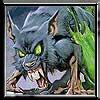People in modern days can actually make many SNES or Genesis games. A single person can make a 2D Mario or even something like Super Metroid.
Designing a game and putting together a bunch of gameplay features of another game are two different things.
If the latter equaled to remaking a game I would be an author to FFX, Resident Evil: Code Veronica X, World of Warcraft (single-player) and Legend of Zelda:OoT remakes. But it doesn't make sense to think this way because barebone technical clones without any content aren't games and very little use of anybody except their author as learning tool.
What even is "a 2D Mario" game? It can't be even defined beyond a platformer, a game genre that you _already_ have there when you open up an appropriate game development tool such as JumpCraft. In fact it takes me 2 minutes to fire up Blender and have a white cube that can move and jump and call it a 3D mario game. What's the point?
But actually designing a game hasn't become any easier nor can any software ever replace imagination, expression, and how to skillfully combine different forms of art into a meaningful experience. That simply takes time and that's where most of the work goes into.
Part of it is improvements in software, most likely.
Sure, putting games together has become easier. But you only see 6 programmers in the credits, some of whose workload has decreased, but not eliminated. The rest are artists doing design tasks and creating the actual game content. You would still be facing most of that development team in full force today.
but the other element seems to just be magic.
In this world when you talk about magic you are only revealing you don't know the scientific explanation. :)
There's no magic. People use free graphics, free models, free music and sfx in a game development software that has drag-and-drop default code assets and fancy GUIs to help. People use placeholders that they never replace and get away with it. If people are remaking games, they rip all the content out of the original game or simply reproduce the design which takes a fraction of the time spent designing it.
People who use these shortcuts in order to make a game tend to have either a meaningless "not quite" clone or a poor quality game where there's equality to the original game in technical terms only. But perhaps it is often all that some people are willing to compare. Still these games aren't miraculously app store hits which speaks about the truth behind the level of quality and content.
All of this leads me to ponder how you are going to be working on your project. But you can't either outsource or clone everything such as story, characters (hopefully), items, cutscenes or dialogue.
So either way, I won't challenge you to make things harder than FFVI or anyhow more than what you're aiming for. Regardless on what FFVI has, I will challenge you to make an RPG game that has 30 minutes of gameplay content in a way that keeps the players interested.








